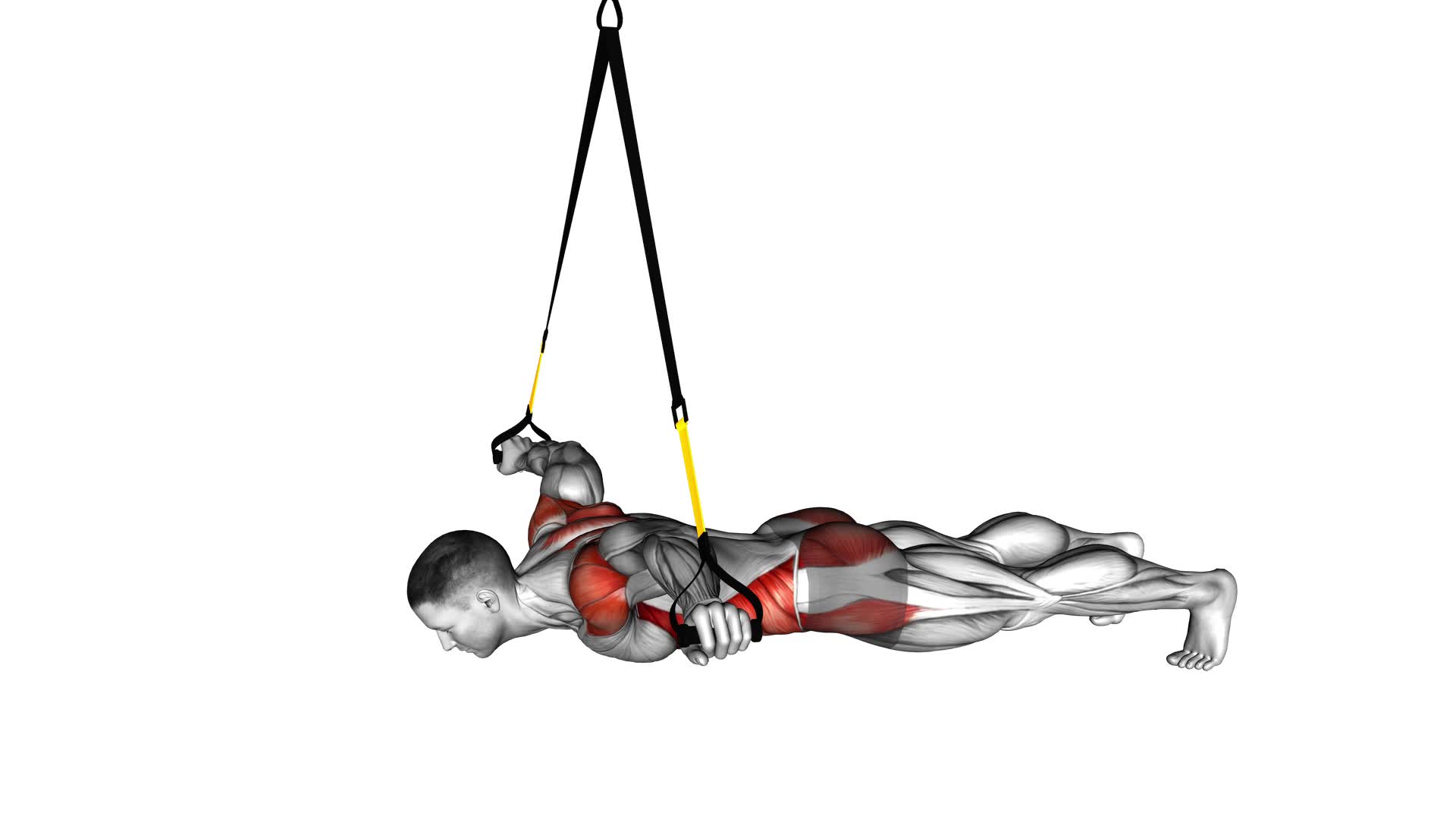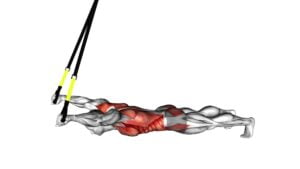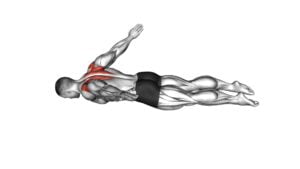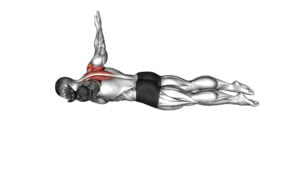Suspender Prone Ts – Video Exercise Guide & Tips

Are you looking for a new exercise to add to your routine? Look no further than Suspender Prone Ts!
Watch This Exercise Video
This video exercise guide and tips will show you the benefits, proper form, and techniques to get the most out of this exercise.
Learn common mistakes to avoid and discover helpful tips for maximizing your results.
Whether you're a beginner or advanced fitness enthusiast, there are variations and progressions for all fitness levels.
Get ready to elevate your workout with Suspender Prone Ts!
Key Takeaways
- Suspender Prone Ts target upper back muscles, shoulders, and core, improving their strength and posture.
- Proper form and technique include engaging core muscles, focusing on breathing, maintaining a neutral spine, and squeezing shoulder blades together.
- Common mistakes to avoid include allowing hips to sag, using momentum to swing arms, rushing through the exercise, and maintaining proper alignment.
- To maximize results, one should maintain a neutral spine, focus on controlled movements, breathe properly, stay consistent with incorporating suspender prone Ts, and follow proper nutrition guidelines.
Benefits of Suspender Prone Ts
You should regularly incorporate suspender prone Ts into your exercise routine to reap the benefits. Suspender prone Ts are an effective exercise that targets your upper back muscles, shoulders, and core. By performing this exercise, you can strengthen these areas, improve posture, and enhance overall upper body stability.
To ensure you get the most out of your suspender prone Ts, it's important to maintain proper form and technique. Start by lying face down on a stability ball or bench, with your feet firmly planted on the ground. Hold a pair of dumbbells and extend your arms straight out in a 'T' position. Engage your core and squeeze your shoulder blades together as you raise your arms up towards the ceiling. Avoid common mistakes such as shrugging your shoulders or using momentum to lift the weights.
To maximize your results, consider incorporating variations and progressions into your routine. You can increase the difficulty by using heavier weights, performing the exercise on an unstable surface, or adding a resistance band for extra resistance.
Proper breathing techniques are also crucial when performing suspender prone Ts. Remember to exhale as you lift the weights and inhale as you lower them. This will help stabilize your core and enhance your overall performance.
To incorporate suspender prone Ts into a full body workout routine, consider pairing them with exercises that target different muscle groups. For example, you can combine them with squats, lunges, or push-ups for a well-rounded workout.
Proper Form and Technique
To ensure optimal results, it's important to maintain proper form and technique when performing suspender prone Ts. Follow these guidelines to maximize your workout:
- Engage your core: Keeping your core muscles activated throughout the exercise is crucial. This helps stabilize your body and protect your lower back from strain.
- Focus on your breathing: Pay attention to your breath and use proper breathing techniques. Inhale deeply before starting the movement and exhale as you extend your arms. This helps maintain stability and control while performing the exercise.
- Maintain a neutral spine: Avoid arching or rounding your back. Keep your spine in a neutral position throughout the movement to prevent injuries and ensure proper alignment.
- Squeeze your shoulder blades: As you reach the top of the movement, squeeze your shoulder blades together. This activates the muscles in your upper back and helps improve posture.
- Control the movement: Avoid swinging or jerking your body during the exercise. Move slowly and with control to fully engage the targeted muscles and prevent unnecessary strain on other body parts.
Common Mistakes to Avoid
To ensure optimal results and minimize the risk of injury, it's important to be aware of common mistakes that should be avoided when performing suspender prone Ts.
By avoiding these mistakes and practicing proper technique, you can maximize the effectiveness of this exercise.
One common mistake to avoid is allowing your hips to sag or lift during the exercise. This can put unnecessary strain on your lower back and diminish the effectiveness of the movement. To prevent this, engage your core muscles and maintain a straight line from your head to your heels throughout the exercise.
Another mistake to watch out for is using momentum to swing your arms up and down. This not only reduces the effectiveness of the exercise but also increases the risk of injury. Instead, focus on controlled movements, keeping your arms parallel to the ground and squeezing your shoulder blades together at the top of the movement.
Additionally, avoid rushing through the exercise or sacrificing proper form for speed. It's important to perform each repetition with control and precision, maintaining proper alignment and engaging the correct muscles.
Tips for Maximizing Results
To maximize your results with suspender prone Ts, it's crucially important to consistently and diligently practice proper form and technique. This won't only help you avoid injury but also ensure that you're targeting the correct muscles for optimal results.
Here are some tips to help you get the most out of your suspender prone T workouts:
- Maintain a neutral spine: Keep your head, neck, and back aligned throughout the exercise. This will engage your core muscles and prevent any unnecessary strain on your spine.
- Focus on controlled movements: Avoid jerking or swinging your body during the exercise. Instead, concentrate on slow and controlled movements to really engage your muscles.
- Breathe properly: Remember to inhale during the eccentric phase (lowering the weight) and exhale during the concentric phase (lifting the weight). This will provide your muscles with the necessary oxygen and help you maintain proper form.
- Stay consistent: Consistency is key when it comes to seeing results. Make sure to incorporate suspender prone Ts into your workout routine regularly to build strength and improve muscle definition.
- Follow proper nutrition guidelines: Remember that exercise alone isn't enough. To maximize your results, follow a well-balanced diet that includes lean proteins, healthy fats, and plenty of fruits and vegetables.
Variations and Progressions for All Fitness Levels
To progress your suspender prone T workouts and accommodate various fitness levels, there are several variations and progressions you can incorporate into your routine. By modifying the suspender prone ts exercises, you can challenge yourself at different levels and continue to make progress in your fitness journey.
For beginners or those with limited upper body strength, you can start with the assisted suspender prone T. Instead of fully extending your arms, you can bend your elbows and rely on the suspension straps for support. This modification allows you to build strength gradually while maintaining proper form.
As you become more comfortable and gain strength, you can progress to the standard suspender prone T. Here, you fully extend your arms and engage your core and back muscles to maintain stability. Remember to keep your body in a straight line from head to toe and avoid any excessive swinging or arching of the back.
For advanced individuals looking for an extra challenge, you can incorporate advanced variations such as the single-arm suspender prone T or the suspended push-up to T rotation. These exercises require even greater strength and stability, as you're performing the movements with one arm or adding a rotational component.
Frequently Asked Questions
Can Suspender Prone Ts Help Improve Posture?
Yes, suspender prone Ts can definitely help improve your posture. These exercises can be done without any equipment, making them accessible for anyone.
By targeting specific muscles in your back, shoulders, and core, suspender prone Ts help strengthen and stabilize the muscles that are crucial for maintaining good posture.
Incorporating these exercises into your routine can lead to better alignment, reduced slouching, and improved overall posture.
Is It Necessary to Use Resistance Bands for Suspender Prone Ts?
Using resistance bands for suspender prone Ts can provide additional benefits to your workout routine. They increase the resistance and challenge your muscles, helping to improve strength and posture more effectively.
However, if you don't have access to resistance bands, there are alternatives you can try. For example, using dumbbells or bodyweight exercises can still engage your muscles and provide a good workout.
It's not necessary to use resistance bands, but they can enhance the effectiveness of suspender prone Ts.
Can Suspender Prone Ts Help With Shoulder Stability?
Suspender prone Ts can indeed help with shoulder stability. These strengthening exercises focus on improving shoulder mobility and strengthening the muscles around the shoulder joint. By performing suspender prone Ts regularly, you can enhance your shoulder stability and reduce the risk of injuries.
Incorporating these exercises into your workout routine can be beneficial for individuals looking to improve their overall shoulder health and stability. Remember to consult with a professional before starting any new exercise program.
How Often Should Suspender Prone Ts Be Incorporated Into a Workout Routine?
To maximize the benefits for core strength, it's important to consider the incorporation frequency of suspender prone Ts into your workout routine.
These exercises can be highly effective when done regularly. By including them in your routine two to three times per week, you can improve shoulder stability and enhance your overall core strength.
Consistency is key, so make sure to stay committed to your workout schedule for optimal results.
Can Suspender Prone Ts Be Modified for Individuals With Shoulder Injuries?
If you have a shoulder injury, it's important to modify exercises to avoid further damage. When it comes to suspender prone Ts, there are modifications that can be made to accommodate your specific needs.
These modifications can help with shoulder rehabilitation and prevent aggravating your injury. By adjusting the exercise to suit your abilities and limitations, you can still benefit from the movement without putting unnecessary strain on your shoulder.
Consult with a professional to ensure you're performing the modified exercise correctly.
Conclusion
In conclusion, incorporating suspender prone Ts into your workout routine can provide numerous benefits, including improved upper body strength and posture. By maintaining proper form and technique, avoiding common mistakes, and following our tips for maximizing results, you can enhance the effectiveness of this exercise.
Additionally, variations and progressions are available for all fitness levels, allowing you to continually challenge yourself. So, why not give suspender prone Ts a try and take your fitness journey to the next level?

Author
Years ago, the spark of my life’s passion ignited in my mind the moment I stepped into the local gym for the first time. The inaugural bead of perspiration, the initial endeavor, the very first surge of endorphins, and a sense of pride that washed over me post-workout marked the beginning of my deep-seated interest in strength sports, fitness, and sports nutrition. This very curiosity blossomed rapidly into a profound fascination, propelling me to earn a Master’s degree in Physical Education from the Academy of Physical Education in Krakow, followed by a Sports Manager diploma from the Jagiellonian University. My journey of growth led me to gain more specialized qualifications, such as being a certified personal trainer with a focus on sports dietetics, a lifeguard, and an instructor for wellness and corrective gymnastics. Theoretical knowledge paired seamlessly with practical experience, reinforcing my belief that the transformation of individuals under my guidance was also a reflection of my personal growth. This belief holds true even today. Each day, I strive to push the boundaries and explore new realms. These realms gently elevate me to greater heights. The unique combination of passion for my field and the continuous quest for growth fuels my drive to break new ground.



